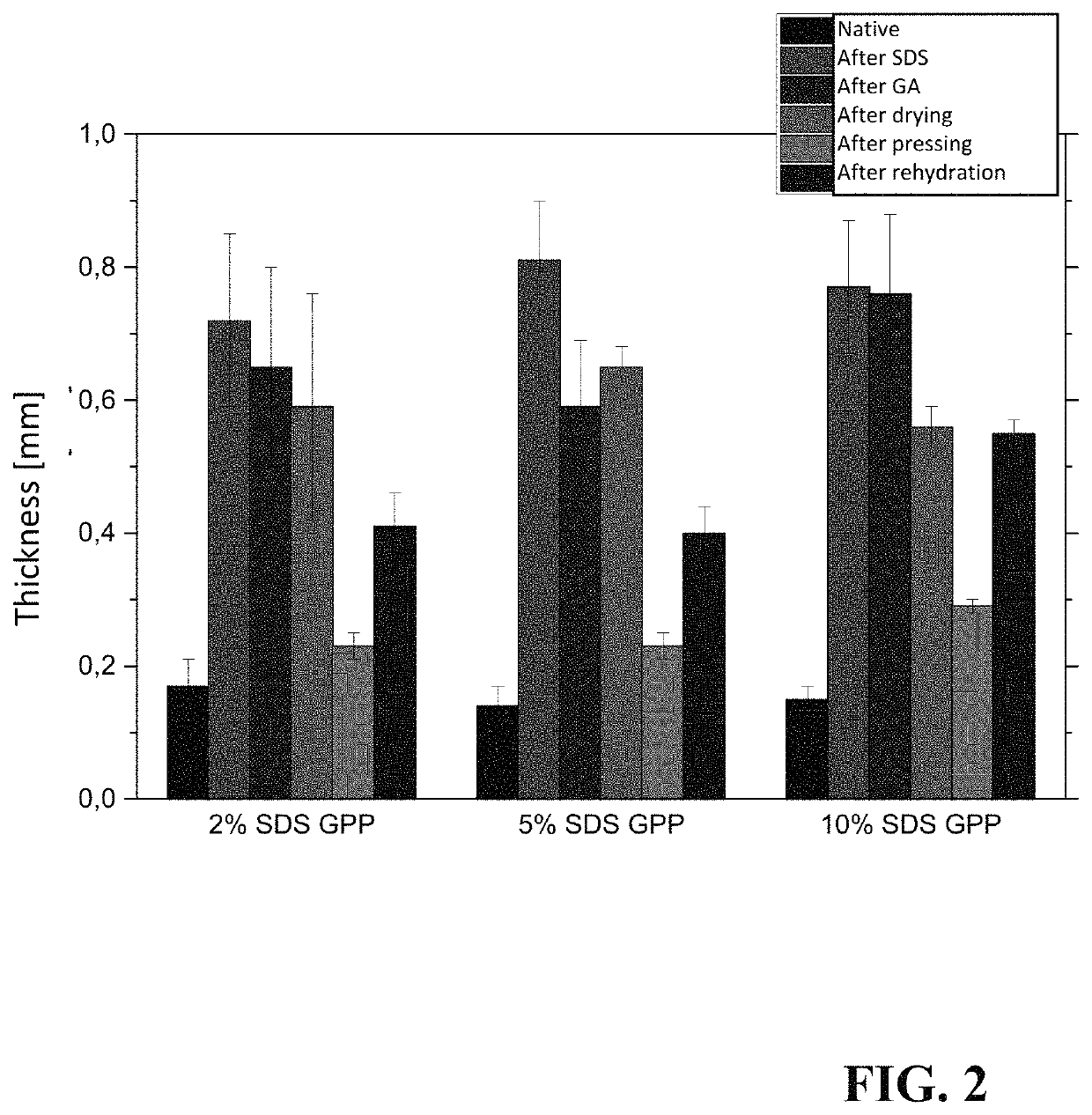Method for reducing paravalvular leaks with decellularized tissue
a tissue and paravalvular technology, applied in the field of tissue preparation, can solve problems such as paravalvular leakag
- Summary
- Abstract
- Description
- Claims
- Application Information
AI Technical Summary
Benefits of technology
Problems solved by technology
Method used
Image
Examples
example 1
[0041]Example 1 discloses an embodiment of the method according to the invention for preparing porcine pericardial tissue with subsequent drying, illustrated schematically in FIG. 1.
[0042]A pericardium is firstly removed fresh from a pig (for example at the slaughterhouse) and is stored for 2 hours at a temperature of 4° C. in a 0.9% w / v NaCl containing penicillin and / or streptomycin (1) [step 1].
[0043]In the next step (2), fat and connective tissue are separated in moist state (in 0.9% w / v NaCl) from the pericardial tissue, and the pericardial tissue is cut to size.
[0044]The tissue is the rinsed, with slight movement, in 100 ml 0.9% w / v NaCl solution (3).
[0045]The pericardial tissue thus obtained is then subjected to a decellularization and subsequent cross-linking.
[0046]Here, the pericardial tissue was decellularized with 100 ml 0.5% w / v to 10% w / v SDS (sodium dodecyl sulphate) in 0.9% w / v NaCl for 24 hours at 37° C. with slight movement (4) and then rinsed repeatedly in an aqueou...
PUM
| Property | Measurement | Unit |
|---|---|---|
| temperature | aaaaa | aaaaa |
| temperature | aaaaa | aaaaa |
| temperature | aaaaa | aaaaa |
Abstract
Description
Claims
Application Information
 Login to View More
Login to View More - R&D
- Intellectual Property
- Life Sciences
- Materials
- Tech Scout
- Unparalleled Data Quality
- Higher Quality Content
- 60% Fewer Hallucinations
Browse by: Latest US Patents, China's latest patents, Technical Efficacy Thesaurus, Application Domain, Technology Topic, Popular Technical Reports.
© 2025 PatSnap. All rights reserved.Legal|Privacy policy|Modern Slavery Act Transparency Statement|Sitemap|About US| Contact US: help@patsnap.com


